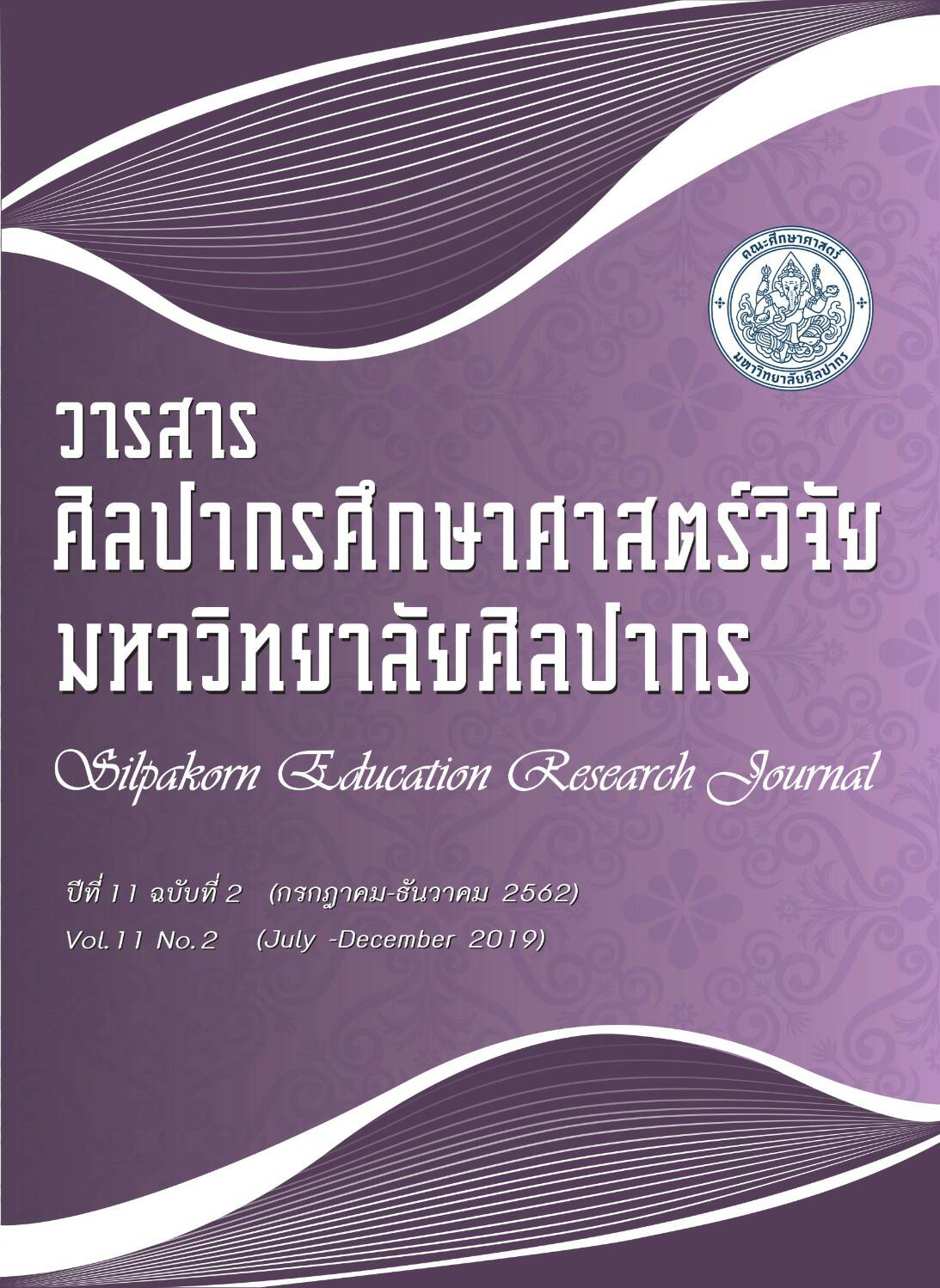A Quality of Work Life Model of Silpakorn University Employees
Main Article Content
Abstract
This research design used both of quantitative and qualitative methodology. The research purposes were to: (1) analyze the components of Quality of Work Life of Silpakorn University Employees and 2) propose the Quality of Work Life Model of Silpakorn University Employees. The 4 instruments employed for data collection were a content analysis form, a semi-structured interview, an opinionnaire and a confirmatory model form. The 3 samples were as: (1) 5 deans/5 vice-deans/5 assistants to the dean/5 administrative practitioners/5 secretaries in totally of 25, (2) 225 academic employees and 236 supporting employees, in totally of 461, and (3) 8 academic representatives and 7 supporting representatives who were the committee in faculty senate of Silpakorn University, in totally of 15. The statistics for analyzing the data were frequency, percentage, arithmetic mean, standard deviation, exploratory factor analysis and path analysis.
The research findings revealed that: 1) The components of Quality of Work Life of Silpakorn University Employees consisted of 7 components 68 observed-variables which were; (1) Quality of Work Life Management with 33 observed-variables, (2) Job Commitment with 14 observed-variables, (3) Work Environment with 5 observed-variables, (4) Autonomous Performance with 5 observed-variables, (5) Organizational Branding with 3 observed variables, (6) Human Relation with 5 observed-variables and, (7) Self Development with 3 observed-variables. 2) The Quality of Work Life Model of Silpakorn University Employees was a causal model between seven components that in accordance with theories and research findings of (1) propriety standards in 91.42% (2) feasibility standards by 98.08% (3) utility standards by 100% and (4) accuracy standards by 100%

